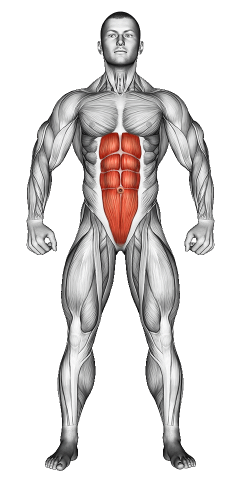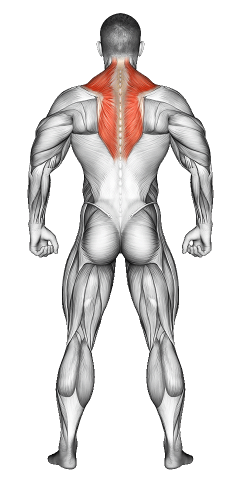Plank to Downward Dog: Video Tutorial & Exercise Guide

Written By: Claude Michael
Updated: Oct 13, 2024
| Workout | Plank to Downward Dog |
| Primary Muscle Group | Abs |
| Secondary Muscle Group | Shoulders |
| Equipment Required | Bodyweight |
| Force Type | N/A |
| Mechanics | Compound |
| Exercise Type | Strength |
| Difficulty | Intermediate |
Plank to Downward Dog: Video Tutorial & Exercise Guide
- 1.Plank to Downward Dog: Muscle Groups
- -1.1Primary Muscle Group
- -1.2Secondary Muscle Group
- 2.Plank to Downward Dog: Step-by-Step Guide
- 3.Plank to Downward Dog: Overview
- 4.Plank to Downward Dog: Benefits
- 5.Plank to Downward Dog: Pro Tips & Advanced Techniques
- 6.Plank to Downward Dog: Progression Plan
- 7.Plank to Downward Dog: Frequently Asked Questions (FAQs)
Secondary Muscles Group
Plank to Downward Dog: Step-by-Step Guide
- Step 1: Start in a high plank position with your hands placed directly under your shoulders, legs extended, and your body forming a straight line from head to heels. Keep your core tight and your back flat.
- Step 2: Engage your core and lift your hips up toward the ceiling, shifting your body into the Downward Dog position. Your body should form an inverted V-shape, with your hands pressing firmly into the floor and your heels pushing toward the ground.
- Step 3: Keep your head between your arms, pressing your chest back toward your thighs while maintaining a strong, straight spine.
- Step 4: Hold the Downward Dog position for a moment, feeling the stretch in your hamstrings and shoulders.
- Step 5: Lower your hips back down into the plank position, maintaining a controlled movement. Repeat the sequence for the desired number of reps.
Plank to Downward Dog: Overview
The Plank to Downward Dog is a dynamic exercise that combines core strength with flexibility and mobility work. It engages your entire body, particularly targeting your core, shoulders, hamstrings, and calves. This movement also helps improve posture, flexibility, and stability, making it a versatile addition to any workout routine.
This exercise is suitable for all fitness levels, as it can be modified by adjusting the pace or range of motion. The Plank to Downward Dog is often used in warm-ups, cool-downs, or as part of a yoga-inspired routine to build core strength while stretching and lengthening key muscle groups.
Plank to Downward Dog: Benefits
The Plank to Downward Dog exercise provides multiple benefits by combining strength training with flexibility work. It strengthens the core, shoulders, and arms while simultaneously stretching the hamstrings, calves, and back. This exercise promotes better posture and improves balance and stability.
Regularly performing this movement can enhance flexibility in the posterior chain (back, hamstrings, calves) and build endurance in the upper body. It is a great way to build both strength and flexibility, and it also serves as a good transition between high-intensity exercises and stretching routines.
Plank to Downward Dog: Pro Tips & Advanced Techniques
Focus on maintaining a strong core throughout the movement to avoid arching your back in the plank position. In the Downward Dog position, press your heels toward the floor to deepen the stretch in your calves and hamstrings. For an added challenge, try lifting one leg off the ground in the Downward Dog position (Three-Legged Dog) to engage your glutes and improve balance.
Plank to Downward Dog: Progression Plan
Beginner
Intermediate
Advanced
Plank to Downward Dog: Frequently Asked Questions (FAQs)
What muscles does Plank to Downward Dog work?
+This exercise primarily targets the core, shoulders, and arms, while also stretching the hamstrings, calves, and lower back.
Is Plank to Downward Dog good for flexibility?
+Yes, this exercise helps improve flexibility in the hamstrings, calves, and back, making it an excellent movement for increasing overall mobility.
Can beginners do Plank to Downward Dog?
+Yes, beginners can easily perform this exercise by taking the movement slower and focusing on maintaining form in both the plank and Downward Dog positions.
How often should I do Plank to Downward Dog?
+You can incorporate Plank to Downward Dog into your routine 2-3 times per week, either as part of your warm-up, core workout, or stretching routine.
What common mistakes should I avoid?
+Avoid letting your hips sag in the plank position, as this can strain your lower back. In Downward Dog, ensure your spine stays straight and your neck relaxed.
Share
Don’t Wish for It, Work for It – Join the FlexXP Newsletter Today!
Thank you for signing up for the FlexXP Newsletter!
This site is protected and the Google Privacy Policy and Terms of Service apply.

